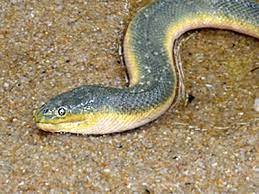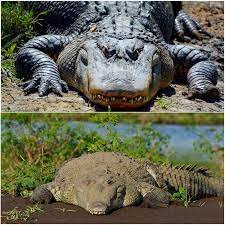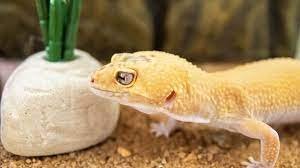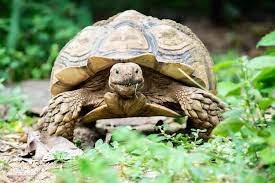There are several species of highly venomous snakes in the world that can cause major injury (or death) to humans. This article ranks the 25 most deadly snakes in the world, from the eastern diamondback rattlesnake to the iconic black mamba, based on their bite strength.
Criteria for Selection

This list of the world’s deadliest snakes was compiled after taking a variety of factors into account. At the outset, the venomous potential (and toxicity) of each snake is evaluated in respect to humans. Think about the snakes’ overall aggressiveness and the number of people they kill each year. Some less venomous snakes (like the saw-scaled viper) are known to kill more people than their more venomous cousins in other parts of the world, therefore it’s important to take this into account. Last but not least, we take into account the typical duration from bite to death, assuming no intervention by medical professionals. Because effective antivenoms exist to treat most snake bites, this third criterion is crucial to the success of this endeavor. Here is a list of 20 snakes whose venom is so potent that it can kill people as well as smaller animals.
Inland taipan

According to the International Journal of Neuropharmacology, the inland taipan is among the world’s most venomous snakes. Even a small amount of its venom is enough to kill its target (or human victims). They make their home in the nooks and crannies of the clay in the floodplains of Queensland and South Australia, frequently making use of the tunnels made by other animals. According to a survey by the Australian Museum, inland taipans are more infrequently seen by people due to the greater isolation to which they are adapted. If the taipan feels threatened, it will coil into an S form and strike with a single or numerous bites. The hyaluronidase enzyme is a key component of its venom that distinguishes it from the venom of other species. This enzyme speeds up the victim’s body’s ability to absorb the poisons, as reported in the upcoming issue of Toxins (Novel Strategies for the Diagnosis and Treatment of Snakebites).
The Eastern Brown Snake

Ranked as the second most toxic terrestrial snake in the world, they are exceedingly formidable and quite hostile in nature. About 23 people have lost their lives due to Eastern Brown Snake bites. These snakes might be a uniform tan or grey or dark brown in hue. Cobras are a family of serpents characterized by their long, slender body and little heads. They are nocturnal, although they spend the day hunting rodents, small vertebrates, and amphibians. A fully grown Eastern Brown Snake is not something to be trifled with. Their venom is designed specifically to be lethal to mammals. because of their agility and speed in combat, they are extremely dangerous. Also, the death rate from snake bites in Australia is largely caused by the Eastern Brown Snake. Despite the development of first-aid treatment and the creation of antivenom, there are presently one to two documented deaths per year.
King Cobra

The king cobra is an exceedingly lethal species of snake from the Elapidae family. Endemic to the forest regions of India and Southeast Asia, the king cobra is regarded the world’s longest venomous snake with a total length of 10.4 to 13.1 feet (at maturity) (at maturity). Despite its reputation for shyness, the king cobra is capable of delivering painful bites and significant venom yields if provoked. Large in size, with an olive-green body and black and white crossbands, this snake is a dead ringer for any other cobra. The king cobra is one of the few snake species that build nests to protect its young. Researchers have no idea why this quality is exclusive to king cobras and not shared by other snakes.
Common mamba

The breeding season for this snake runs from September to February, a time when it is typically shy away from human contact. The sufferer may endure excruciating pain and swell at the bite site, which can progress to gangrene, nausea, vomiting, abdominal pain, trouble swallowing and breathing, and even paralysis. Within 30 minutes of envenomation, death may occur.
Red-Bellied Black Snake

The eastern Australian red-bellied black snake is a particularly dangerous species. The red-bellied black snake is one of the most common snakes in Australia, yet its reputation for menace is well-deserved. Thankfully, the snake is not considered to be violent and is known to avoid contact with humans wherever possible. As its name implies, the red-bellied black snake can be easily spotted due to its ink-black body that contrasts dramatically with a reddish-orange underbelly. The red-bellied black snake is said to resemble cobras when they feel threatened. To do this, they must lift their head and neck off the ground.
Mainland Tiger Snake

In spite of the fact that this snake gets its name from its resemblance to a tiger, there are actually tiger snakes that don’t have any stripes at all. They cause deaths because they tend to congregate in areas frequented by humans. Recently, though, the Eastern Brown Snake has taken over this role. However, humans should still exercise caution if they come across one, as they are ready to fight at any time and would respond to threats by raising their heads and necks like a cobra. This snake can navigate through water with ease and boasts fangs that reach 3.5 to 5 mm in length. They can be anywhere from grey-brown to black, and many have also noticed that their heads are noticeably bigger than their necks. They come in many different colors, but that’s not how you can tell them apart.
King Brown

The royal brown snake, also known as the Mulga Snake, belongs to the venomous Elapidae family of snakes. The king brown snake, which may grow up to 8.2 feet in length, is the longest known venomous snake in Australia. Only Victoria and Tasmania don’t have them, thus they’re widespread over the continent. The blackish-brown hue of the king brown, the reddish tint of its eyes, and the slightly greater width of its head in comparison to the rest of its body are all distinctive features. The king brown snake has the potential to live about 30 years in the wild, making it one of the world’s longest-living snake species.
Saw-scaled viper

Venom yield per bite (in milligrams): 5.0 – 48.0 in India, Sri Lanka, Pakistan, the MENA region, and Africa. It has cytotoxins, neurotoxins, hemotoxins, and cardiotoxins in its venom. Most of their neighborhoods are peaceful. Nighttime is when you’re most likely to encounter one of these creatures. 3-5 mg is the fatal dose for an adult.
Blue Krait

The Blue Krait is feared by many as the most lethal snake in Asia. About half of the bites from a Blue Krait are lethal, even with medical treatment. There are highly toxic neurotoxins in the venom of blue kraits. The paralysis this causes almost always results in death due to respiratory failure. Blue Kraits, thankfully, are nocturnal and prefer to avoid humans by staying in their moist woodland habitat. During the day, these snakes are quite docile. Despite their mild demeanor, Blue Kraits are mostly carnivores. Blue Kraits are slender reptiles that typically have a mixture of black, white, and grey on their body.
Papuan Black Snake

The Papuan black snake, a member of the Elapidae family and a highly venomous species, is found only in New Guinea and Indonesia. The Papuan black snake is the most lethal species of black snake in the world. It is extremely deadly and can cause severe injury or even death. Their name comes from the striking contrast between their glossy black upper surfaces and the gunmetal grey of their underside. They can grow to be as long as 7 feet when fully mature. The Mekeo people of Papua New Guinea call the Papuan black snake auguma, which literally translates to “bite again.” The snake’s vicious nature and propensity to attack repeatedly when aroused inspired the moniker.
Boomslang

When compared to other languages, the Boomslang is notably passive. Their venom is mostly a hemotoxin, which causes bleeding in many tissues. They don’t keep night hours and instead operate during the day. Usually found in or near trees and bushes, these snakes occasionally venture to the ground for activities like sunbathing and hunting. Although people would term them tree snakes in Africa, they also inhabit grasslands, savannahs, and open places with isolated trees and bushes excellent for shelter from predators. Their eyes are either green, brown, or grey, and they have excellent vision. Boomslang is not at risk of extinction because their numbers in the wild are strong and consistent. Snakes known as boomslangs live in trees and are constantly on the lookout for danger. They grip their prey and hang on until the venom takes effect, feeding primarily on birds and lizards (especially chameleons). These snakes come in a wide range of colors and patterns, from black and grey to brown and green, and all of their scales are keeled.
Common Death Adder

The Common Death Adder stands out as one of Australia’s most unusual snakes. Although these snakes’ diminutive stature and stocky build make them look like vipers, Australia is really home to no such creatures. Bars of bronze, orange, or tan color is commonly seen throughout their bodies. The Death Adder is a sly, ambush predator. They employ a hunting strategy known as caudal luring, in which they utilize their tails as a “lure” to attract prey by appearing to be worms. The Death Adder strikes any reptile, frog, or mammal that comes within striking distance. When threatened, they may strike at incredible speeds, rivaling the quickest snakes in the world. Venom from common death adders is extremely neurotoxic. However, since their venom is so precious, they tend to resort to dry bites. In the event of an injection, a lot of venoms is administered. Because of their proximity to humans and animals, death adders are a particularly perilous type of snake.
Dugite

The dugite belongs to the family Elapidae and is an extremely poisonous snake. The dugite, a snake native to Western Australia, is feared for its lethal bite. This species can be identified by its small heads, variable seasonal color (grey, green, or brown), and little patches of glossy black scales. It’s also worth noting that their length averages out to about 4.92 feet.
Mojave Rattlesnake

As one of the most venomous rattlesnakes, this species is also exceedingly deadly due to its aggressive nature and propensity to chase humans. When threatened, they would make a buzzing sound by shaking their tail, which they interpreted as a warning to the intruder before biting it. Envenomation from this snake can kill a person within 10 minutes of breathing cessation. Antivenom is a medicine that can help those who were bitten. Diamonds are common on the Mojave rattlesnake’s back. One of the reasons they are frequently mistaken for the Western diamondback rattlesnake is that they look similar. They are nocturnal, and during the day, they seek shelter in cracks or amongst shrubs when the sun gets too hot.
Stiletto Snake

Its long, shallow fangs have led many to pick up this snake thinking it was harmless, only to find out later that the venom they inject attacks cells and can cause severe discomfort, swelling, blistering, or even tissue damage. Since no antivenom has been developed, most medical professionals can only provide pain relief. Biten body parts typically develop tissue necrosis, which ultimately necessitates amputation. The Stiletto Snake is nocturnal and hunts rodents, lizards, and other snakes. It comes out of its den at night, especially after a rainstorm, when it is most active. A distinctive feature of these snakes is their short, stubby tails, which finish in sharp points. They would thrash about and bite at you sideways if you picked them up, which would warn off any potential predators.
Forest Cobra

The forest cobra also called the black cobra or the black and white-lipped cobra is a venomous snake belonging to the Elapidae family. As one of the world’s largest cobra species, the forest cobra commands respect wherever it goes (reaching upwards of 10 feet at maturity). Because of its aggressive nature and highly toxic venom, it is also considered one of Africa’s deadliest snakes. Like other cobras, this one is instantly recognizable thanks to its hood, massive size, and glossy black, white, brown, and yellow coloring. When compared to other snake species, the forest cobra has a particularly high venom output. An incredible 1,102 milligrams of venom can be delivered in only one bite.
Also, know 20 Friendly Pet Snakes For Beginners (and Choosing the Right One)
Philippine Cobra

The Northern Philippine cobra, or Philippine cobra, is a poisonous snake species of the family Elapidae. The Philippine cobra, as its name suggests, is endemic to the northern Philippines and is considered the most dangerous of all cobra species. The mature length of this snake is around 3.3 feet, and it prefers to live in lowland plains or forests close to a constant supply of freshwater. Their stout build, reddish coloring, and wide hood make them easy to spot.
Beaked sea snake

Arabian Sea, Persian Gulf, Taiwan, Vietnam, India, Pakistan, Bangladesh, and the rest of South Asia. The Indian coast and offshore islands constitute its primary range. In India, this snake is among the top 20 most frequent species. They are most active during the day, may stay submerged for up to five hours at a period, and can travel as deep as 100 meters. They are quite aggressive. Some people believe that sea snakes can survive without air, although this is a popular misconception. These are air-breathing reptiles, and they resurface from water once in a while to breathe some air. A cylindrical lung allows for efficient air exchange in these creatures. Its lung has evolved to run the length of its vast body.
Chinese Copperhead

The name “Hundred-Pacer” is commonly used to refer to these snakes. This is because of the myth that after being bitten, you have only 100 steps until you expire. Their venom has rapid and far-reaching effects, including palpitations of the heart and other cardiovascular symptoms. When they bite, their venom can eat away at the surrounding tissue, eventually causing necrosis. Some Asian countries are home to the rare Chinese Copperhead, a type of Pit viper. The American Copperhead is a close relative of these snakes. However, their venom is significantly more dangerous than that of the American Copperhead. When compared to the toxicity of American species (2.711 mg/kg), Chinese species have a much lower value of 0.38 mg/kg. Keep in mind that venom with a lower toxicity rating is more dangerous. Many people have lost their lives due to snakebites because of these snakes. It is believed that the antivenom is only effective if administered during the first hour after the bite.
Fer-De-Lance

The venom of a Fer-de-Lance snake, like that of other pit vipers, is highly lethal to humans. Tissue death or muscle injury may result. This explains why even most locals are wary of them. As unfortunate as it may be, they tend to congregate in agricultural areas in search of sustenance. When people come into contact with Fer-De-Lance, it’s usually not a good thing. It’s the deadliest snake in the whole of South and Central America. More people have been killed by this kind of snake than by any other native American snake. The poison triggers rapid bleeding. It is difficult to see one during the day because it is a nocturnal lizard and spends the day sleeping in its nest.
The biology of snakes that may poison humans is incredibly intricate. It’s true that venom may be quite harmful, but it can also be very helpful under the right circumstances. There are venoms that are highly poisonous to some animals but have little or no effect on others. It’s crucial to increase knowledge about the dangers posed by poisonous snakes and the therapies available to prevent or alleviate their effects. Snakebites are a major problem, especially in nations with less developed medical infrastructure. The annual number of poisonous snake bite victims is estimated by the WHO to be over five million. A venomous snake can kill anywhere from eighty thousand to one hundred forty thousand people a year. Most of these fatalities occur in developing nations where people live in closer proximity to poisonous snakes.




